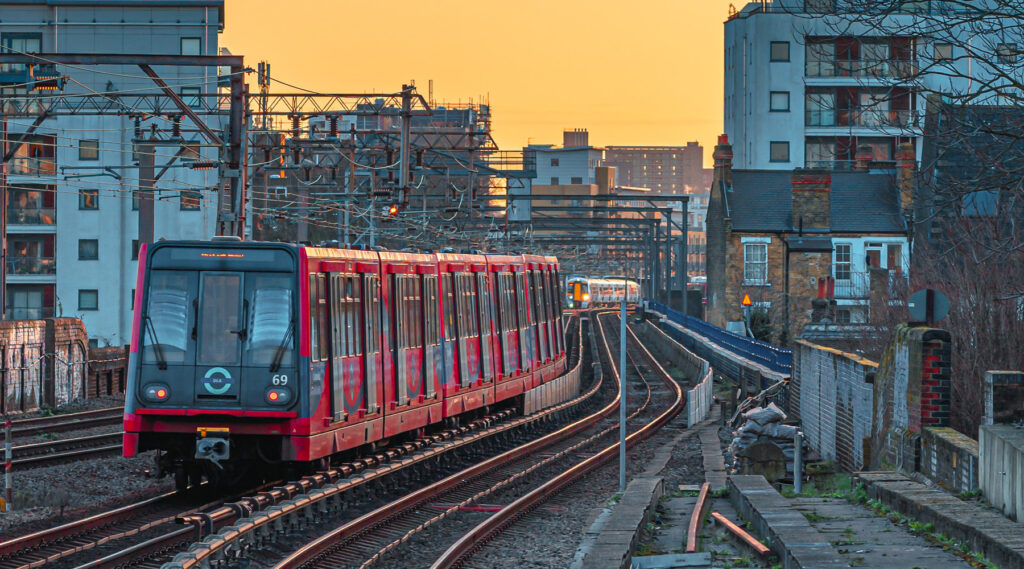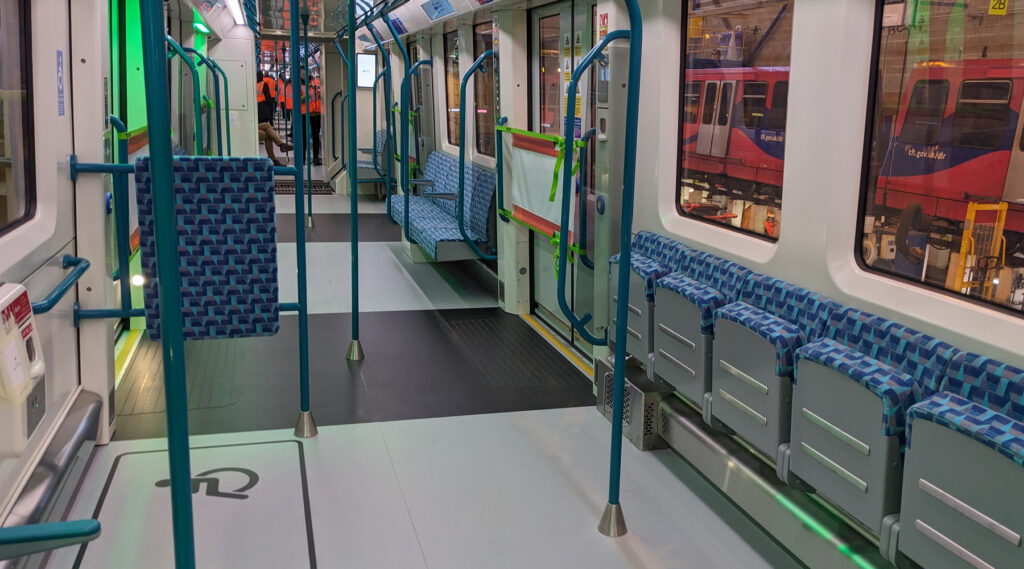The Docklands Light Railway (DLR) is seeking exemptions from accessibility requirements that would require it to close the gap between trains and platforms sooner than it is currently able to.
Although the DLR is generally pretty good for accessibility, with lifts to all stations and pretty much step-free access between trains and platforms, there are gaps at some parts of some platforms that breach the guidelines, particularly on curved platforms.
Transport for London (TfL) has a plan to shrink those gaps for some stations, but as those plans will take longer than the current rules expect, they have to request an exemption from the regulations, and that’s just gone out to consultation.
Tom Page, TfL’s General Manager for the DLR, said: “Accessibility has always been a key priority for the DLR, and it has offered step-free access across the whole network since it opened. New accessibility regulations have been introduced since the network was constructed in the 1980s so we have had to ask the Department for Transport for exemptions for some aspects of the DLR while we make improvements to infrastructure and train fleet.
“While it will not be possible to dispense with all these exemptions due to certain unique design features of the DLR network, we continue to look at innovative ways to improve stations and make changes to our trains. This includes introducing 54 new trains from 2024, which feature improved accessibility features, as well as more spacious interiors and better customer information.”
While most spaces between doors and platforms fall within the 75mm maximum allowed, some don’t comply, mainly due to the original design of the DLR dating back to the mid-1980s. The issue is that the platforms need to have enough clearance to allow trains to arrive at the stations at a decent speed before stopping, but slowing the approach speed would affect the timetable and mean fewer trains per hour could run on some parts of the network.
TfL has a plan to shrink the gaps by modifying platforms where it is possible to do so without affecting train speed, but that will take time and isn’t going to be possible everywhere.
What the consultation accepts is that the cost and disruption of making all platforms fully compliant would be considerable, and only reduce the gap between trains and platforms by about 2cm, which is a lot of money for not a lot of improvement. However, as that 2cm of horizontal stepping distance is outside the recommendations in the RVAR 2010 regulations, the DLR is seeking an exemption.
There are a number of stations that TfL is seeking exemptions until 2025 and 2035 to allow for time for station upgrades to shrink the gaps tied in with the arrival of the new B23 class trains which themselves have modifications to reduce the train to platform gaps.
The exemption order would give TfL time to make modifications to 24 platforms by September 2025. A further 13 platforms are being requested to have an exemption to 2035, which is in line with their existing replacement plans. Fortunately, the gaps being shrunk are often only affecting one or two doors along the length of a train, so there are always compliant doors elsewhere which can be highlighted with step-free signs.
However, some stations are expected to need exemptions until 2060, as the modifications would need too much work to be carried out without major interventions, and the station structures that would need replacing are barely a decade into their expected 50 year lifespan.
There was also an issue with a door closure alarm.
Currently, when the doors are closed by the train staff, there’s a beeping sound as the doors close. The regulations recommend that the beeping should start 3 seconds before the doors close in order to give people an audio warning that the doors are about to close.
The DLR doesn’t give an advance warning though – the doors beep the moment they start to close.
The DLR carried out some experiments in 2018 with a 3-second and a 1-second alarm before the door closes, but counter-intuitively, they found this increased accidents, rather than reducing them. It seems that the beeping sound caused people to rush for the doors rather than stand back, and that led to more people getting caught by closing doors than before. They’re seeking a technical exemption from the regulations that require an alarm sound before the doors close.
The other reason is that with a typical 10-second dwell time at stations, adding 3 seconds to allow for the door warble warning can result in a staggering 19% increase in journey times on some routes, because the timetable is so intensive that there’s limited capacity on some crossovers and the single track near Pudding Mill Lane station to allow for longer dwell times at stations.
They argue that reducing passenger crowding by running an intensive service — which will get more so by 2027– outweighs the downside of not offering people a 3-second warning that the doors are about to close.
Considering that the warning sound actually increased accidents, it would be difficult to argue against the request.
However, sensibly, all these changes should be put out to consultation in case there’s something that’s been overlooked.
The consultation is here.
I’d recommend reading it before replying with “yes, but what about…”









I imagine the 2060 exemption for Tower Gateway is in part due to the uncertainty regarding that station’s future. After all why do an expensive platform rebuild when there’s the possibility of the station closing, especially if Fenchurch Street relocates.
“ so there are always compliant doors elsewhere which can be highlighted with step-free signs.”
This is how it works with e.g. Victoria Line and the raised areas so it should be approved.
Surely access should be reasonable not perfect especially if it increases costs markedly,
Having read the consultation document, I can only say that I find it extraordinary how much time and money is spent on such things which clearly have negligible benefit to anyone.
This figure of almost half a million pounds to test different door warbling durations that no-one is asking for and which clearly have a negative impact is phenomenal. Imagine if this money had been spent improving the reliability of station lifts? Surely of much more benefit for wheelchair users?
It does sound like the 3s door warbling requirement has been chosen without sufficient consideration of secondary implications. We know that dwell time reduces capacity on all railways and whilst the DLR may be particularly sensitive to a 3s addition one can only imagine that this will be having a significant effect elsewhere, apparently with negligible benefit to those it’s supposed to be helping, and potentially with negative consequences.
My memory of transport networks outside the UK is that door warnings are typically shorter there as well. I think the Paris metro is immediate or close to that?
TfL is being sensible here. Better to prioritise, and perhaps spend more money to improve access for the disabled where none exists at all…
Why don’t all trains line up with platforms so ramps are unnecessary? It’s so long since the first carriages were built like stage coaches surely they should have been built to line up like roll on-roll off ferries for decades?